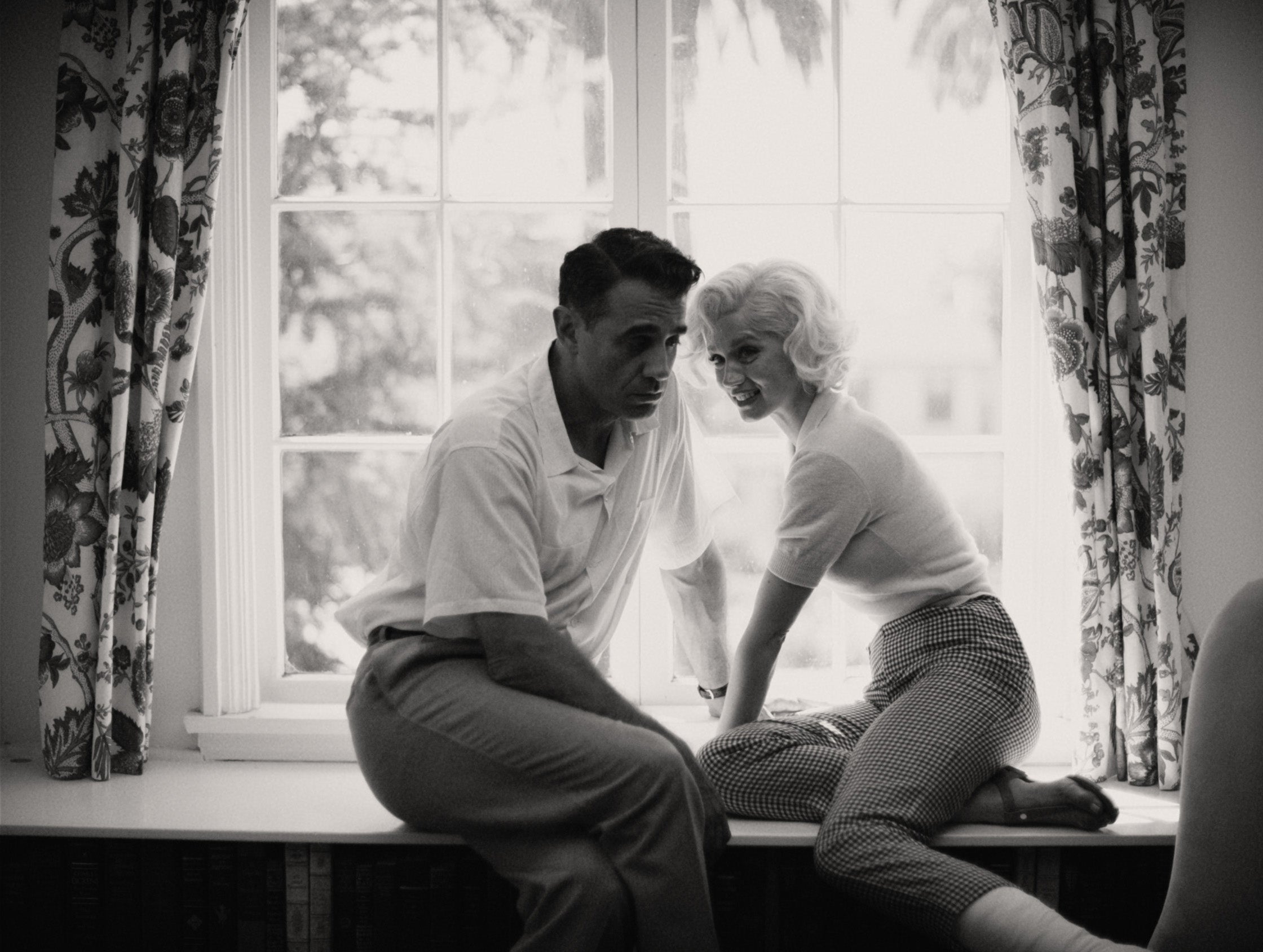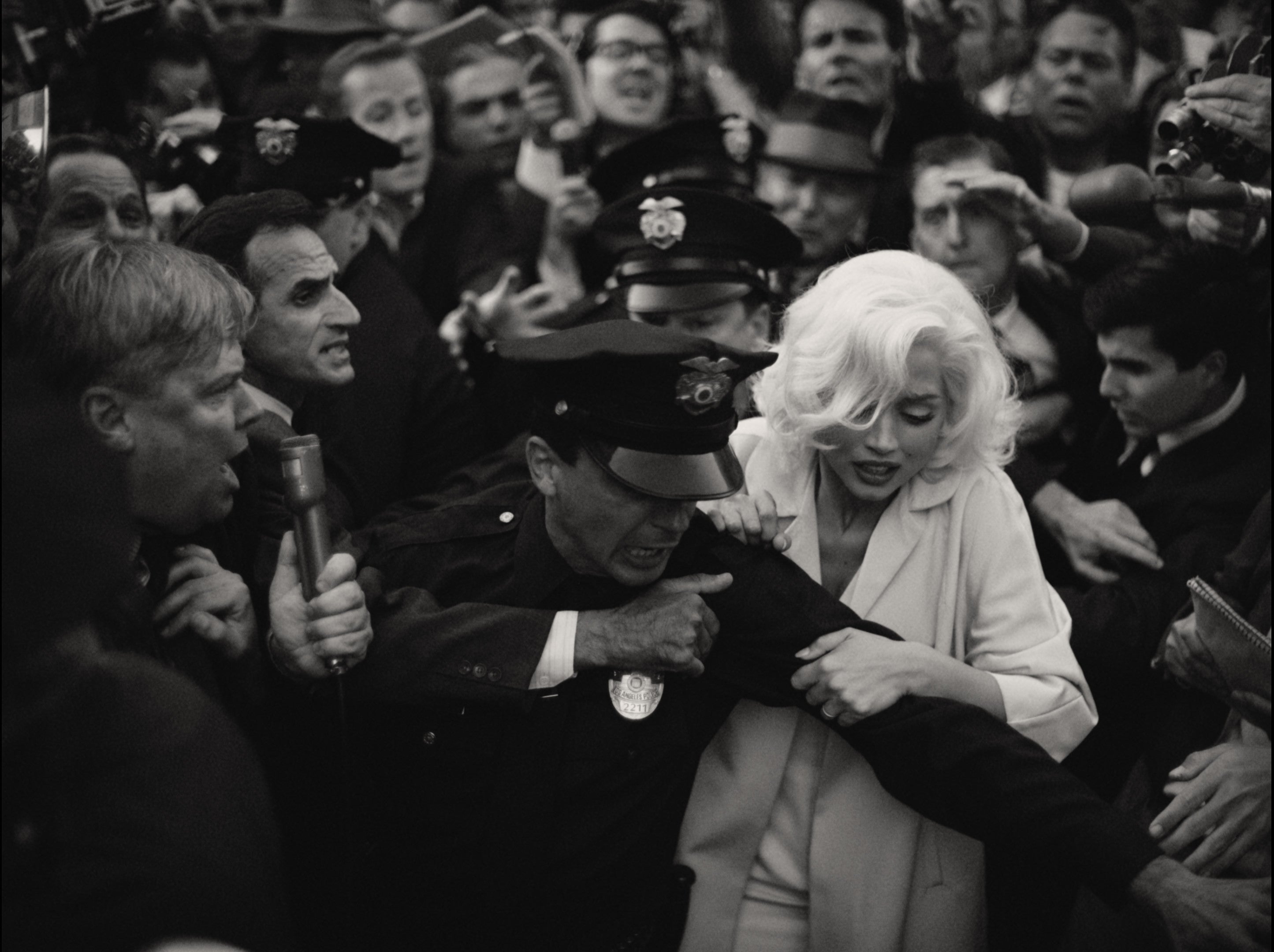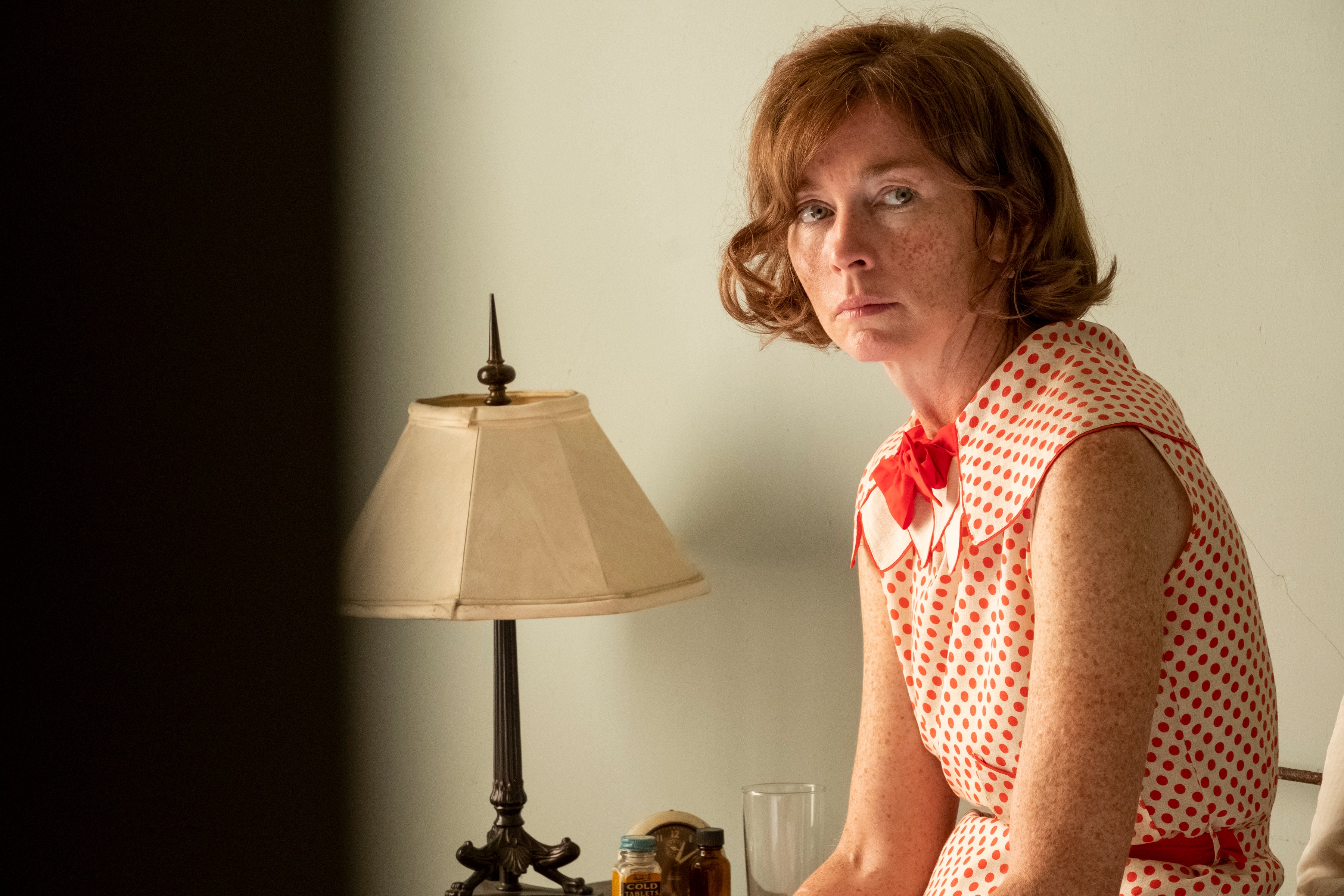The Independent's journalism is supported by our readers. When you purchase through links on our site, we may earn commission.
Blonde: What is fact and what is fiction in Netflix’s controversial Marilyn Monroe film?
The much-talked about Netflix film documenting Marilyn Monroe is based on Joyce Carol Oates’s Pulitzer-nominated novel
Your support helps us to tell the story
From reproductive rights to climate change to Big Tech, The Independent is on the ground when the story is developing. Whether it's investigating the financials of Elon Musk's pro-Trump PAC or producing our latest documentary, 'The A Word', which shines a light on the American women fighting for reproductive rights, we know how important it is to parse out the facts from the messaging.
At such a critical moment in US history, we need reporters on the ground. Your donation allows us to keep sending journalists to speak to both sides of the story.
The Independent is trusted by Americans across the entire political spectrum. And unlike many other quality news outlets, we choose not to lock Americans out of our reporting and analysis with paywalls. We believe quality journalism should be available to everyone, paid for by those who can afford it.
Your support makes all the difference.Separating fact from fiction is tricky in the new Marilyn Monroe drama Blonde.
The Netflix film, which stars Ana de Armas in its central role, doesn’t take the familiar form of a Hollywood biopic steeped in research. Instead it’s based on the best-selling Joyce Carol Oates novel of the same name from 2000, itself a highly fictionalised work emphasising the ways in which Marilyn was victimised across her life.
Similarly, the film controversially depicts some of the most traumatic moments of the Hollywood actor’s life, from her Los Angeles childhood in the 1920s and 30s to her death at the age of 36. But like any fictionalisation of a real person’s life, it raises as many questions as it attempts to answer.
Here is how some of Blonde’s most shocking storylines compare to what really happened.
Was Marilyn Monroe abused as a child?
Blonde depicts Marilyn’s childhood as deeply unstable. Her unwell mother, Gladys, drives them both into an LA wildfire; in a later scene, she attempts to drown young Marilyn in the bathtub. Eventually in the film, Gladys, played by Julianne Nicholson, is institutionalised for mental illness and Marilyn is sent to an orphanage.
The broad contours of this account are true, but the specifics are unsubstantiated. Monroe did spend time in boarding houses and other forms of foster care as a child. Her mother was diagnosed with schizophrenia and hospitalised for the first time in 1934 when Monroe was about 10. Gladys would be hospitalised intermittently for long periods of her life.
Did Marilyn Monroe know who her father was?
In the film, Marilyn’s father appears mostly as an apparition and his identity is never clarified. Her mother tells her he works in showbiz, but given Gladys’ mental state, it’s never clear if she’s lying to her child – and perhaps herself – or telling the truth.
In 2022, Monroe’s father was confirmed via DNA testing, according to the documentarians behind Marilyn, Her Final Secret, to be Charles Stanley Gifford – a co-worker of her mother’s at an LA film lab.
According to Sarah Churchwell’s comprehensive 2004 biography, it’s unknown whether Monroe knew Gifford to be her father when she was alive or even suspected it.
The Joe DiMaggio stand-in character hits Marilyn Monroe in Blonde. Did this happen in real life?

The world will never know. There are several accounts of witnesses overhearing screams and even seeing DiMaggio “slap” Marilyn, but they’ve never been verified. And neither Monroe nor DiMaggio publicly discussed it.
In the film, DiMaggio is never mentioned by name, but by his highly identifiable attributes: he’s a famous baseball player with Italian heritage. In the film the character is played by Bobby Cannavale.

Watch Apple TV+ free for 7 days
New subscribers only. £8.99/mo. after free trial. Plan auto-renews until cancelled

Watch Apple TV+ free for 7 days
New subscribers only. £8.99/mo. after free trial. Plan auto-renews until cancelled
In real life, in 2020, Christie’s auctioned off a letter that Monroe had written to her then-husband during their marriage and which he kept in its wallet. The emotional note is one of the few first-person insights we have into their famous romance.
It reads, “Dear Joe, I know I was wrong! I acted the way I did and said the things I did because I was hurt – not because I meant them – and it was stupid of me to be hurt because actually there wasn’t enough reason – in fact no reason at all. Please accept my apology and don’t, don’t, don’t, don’t be angry with your baby - she loves you. Lovingly, your wife (for life) Mrs. JP DiMaggio.”

In Blonde, Marilyn Monroe is raped on the casting couch. Is this a true story?
This scene, along with a rape scene involving an unnamed American president who forces Marilyn to perform oral sex, doesn’t appear to have any basis in reporting. Rather the scenes dramatise Marilyn’s relative powerlessness to the men that surrounded her in real life, including studio executives and her most famous rumoured lover, JFK.
In real life, Monroe did speak of alleged childhood sexual abuse while she was still alive.
Did Marilyn Monroe have a miscarriage?
In real life, Monroe’s miscarriages during her marriage to the writer Arthur Miller were well-publicised at the time, and have continued to be referenced by her biographers, including in Gloria Steinem’s Marilyn, published in 1988.

Did Marilyn Monroe have an abortion?
Yes, according to several biographers, though the details in Blonde are invented.
How did Marilyn Monroe die?
In Blonde, Marilyn Monroe dies alone at home of a barbiturate overdose, which is largely accepted to be what really happened.
In real life, in the weeks following her 1962 passing, the LA coroner ruled her death a suicide.




Join our commenting forum
Join thought-provoking conversations, follow other Independent readers and see their replies
Comments